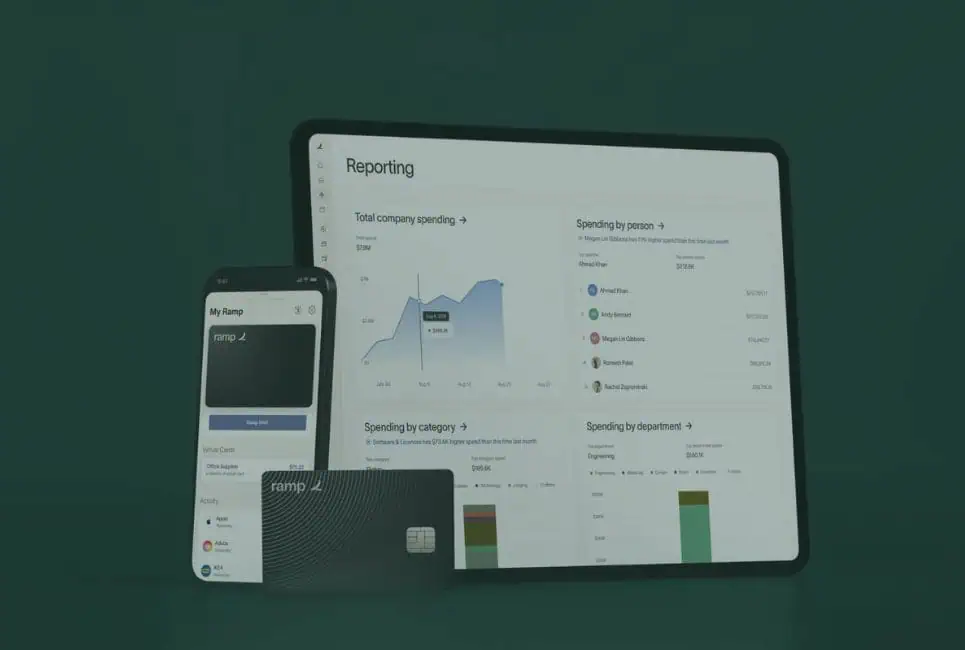Last Updated on May 27, 2025 by Ewen Finser
Ramp has become wildly popular in the expense management space in recent years, particularly for its corporate card offering. However, I’ve spoken to plenty of business leaders who have been frustrated by its revenue and funding requirements, limited international capabilities, and clunky user interface.
Don’t get me wrong; I’m a fan of Ramp, and I think it does a great job for a lot of companies. But, there are alternatives out there, and it’s quite possible one of them might represent better value for your business.
I’ve looked at some of them here.
I’d highly recommend Melio to any small business owner, particularly where an integrated accounts receivable and accounts payable system is a priority. Aside from that, I’d recommend thinking carefully about your specific needs and looking for the tool that will do the best job of satisfying them. Ramp is a great platform, but don’t jump at it just because it’s popular; a more suitable alternative may be out there.
Top Ramp Alternatives in 2025
1. Melio – Best for Small Businesses and Freelancers
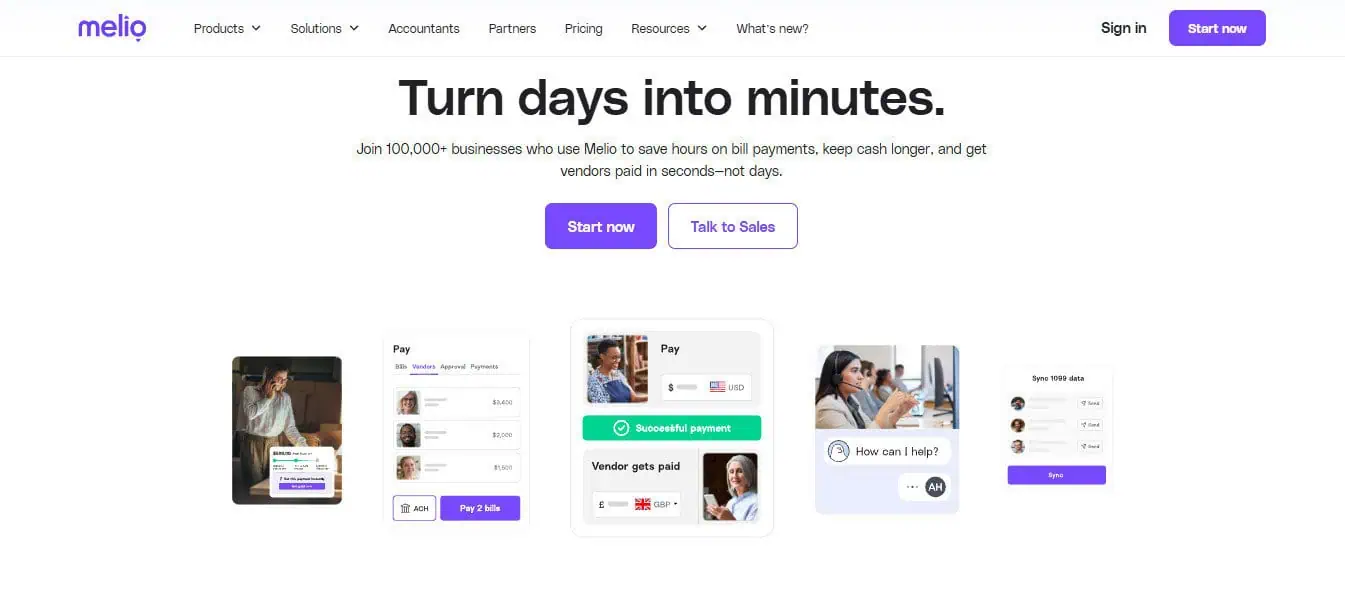
As a small business owner who has experienced a lot of frustration over the enterprise-first bias of many SaaS providers, I’m a big fan of any service that caters to the little guy. For this reason, Melio is my top pick here.
Melio’s key selling point is its streamlined approach to accounts payable. It allows you to pay bills via bank transfer or credit card, even if vendors don’t accept cards; this comes in handy a lot. If you’re working with a large number of clients, you’ll eventually encounter one or two with awkward payments systems in place.
It also does a great job of supporting international payments in multiple currencies, which is handy if you have clients or customers in different parts of the world. This is a big failing of some other service providers in this space.
Melio also offers straightforward integration with QuickBooks and Xero, which can make life a lot easier. Additionally, unlike Ramp and some others on this list, Melio offers a comprehensive accounts receivable service, which makes it more attractive as an all-in-one solution.
There are some shortcomings; it doesn’t offer advanced expense management tools or a corporate card program. If you need either of these, you might be better off looking elsewhere.
2. BILL Spend & Expense – Comprehensive AP/AR Automation
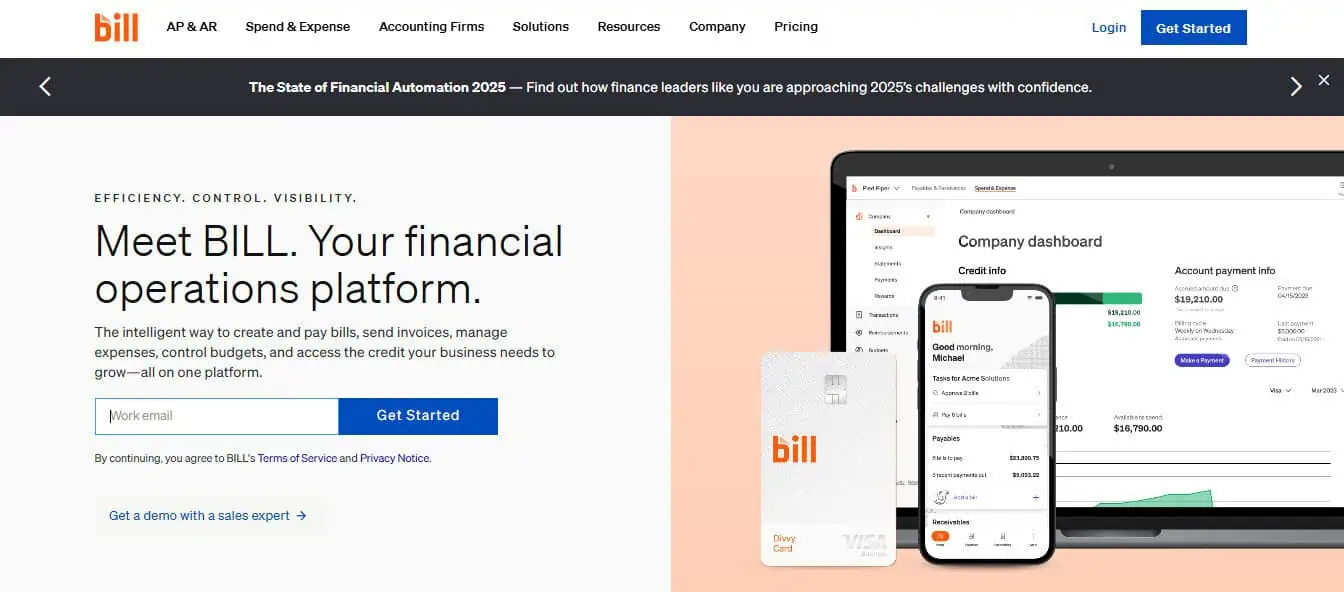
BILL is a very popular Ramp alternative among small to medium operations in the US. The big advantage of BILL compared to Ramp is that it doesn’t impose revenue or funding requirements, so you won’t be disqualified on this basis. Even those companies that do meet Ramp’s requirements must undergo a screening process to prove this, which creates significant friction during the onboarding process.
Formerly known as Divvy, BILL provides a full suite of accounts payable and receivable automation tools. If yours is a bigger operation, or you’re planning to scale it into one, you’ll find a lot of useful stuff here. Its automated bill payments, expense tracking, and real-time reporting are strong features; if you’re in the market for one or more of these in particular, you should look at BILL.
Like Melio, it also offers hassle-free integration with popular accounting platforms.
BILL’s big downfall for me is its complexity. Getting started is a process, and many of its features will probably be unnecessary for smaller companies. Pricing is another concern; if you don’t need its full suite of offerings, you’ll probably find better value for money elsewhere.
3. Airbase – Ideal for Mid-Market Companies
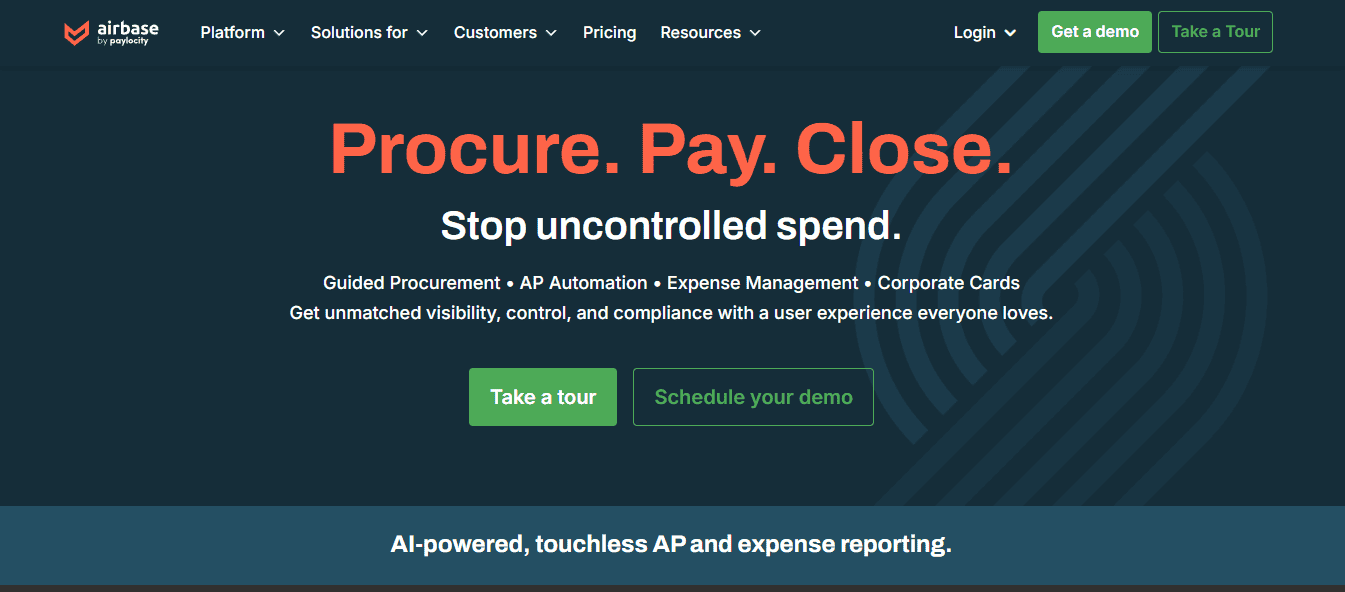
Airbase strikes a nice balance between comprehensiveness and ease of use. It offers a lot of what bigger companies need to manage their expenses, but is also accessible to smaller teams with less complex requirements.
It has a unified platform that combines accounts payable, expense management, and corporate card issuance. It also boasts robust financial controls, advanced approval workflows, straightforward integrations, and a lot of useful automations.
Again, though, a lot of this may be overkill for smaller businesses, both in terms of learning curve and price point. If you’re in the mid-market Goldilocks zone, you might find that Airbase strikes the right notes for you; otherwise, your needs might be better addressed elsewhere.
It’s also worth noting that, because Airbase offers a line of credit, it requires you to undergo an approval process before getting started. As is the case with Ramp’s screening process, this can cause significant hassle, and it might all be for nothing if you don’t meet the requirements.
4. Tipalti – Best for Global Payment Needs
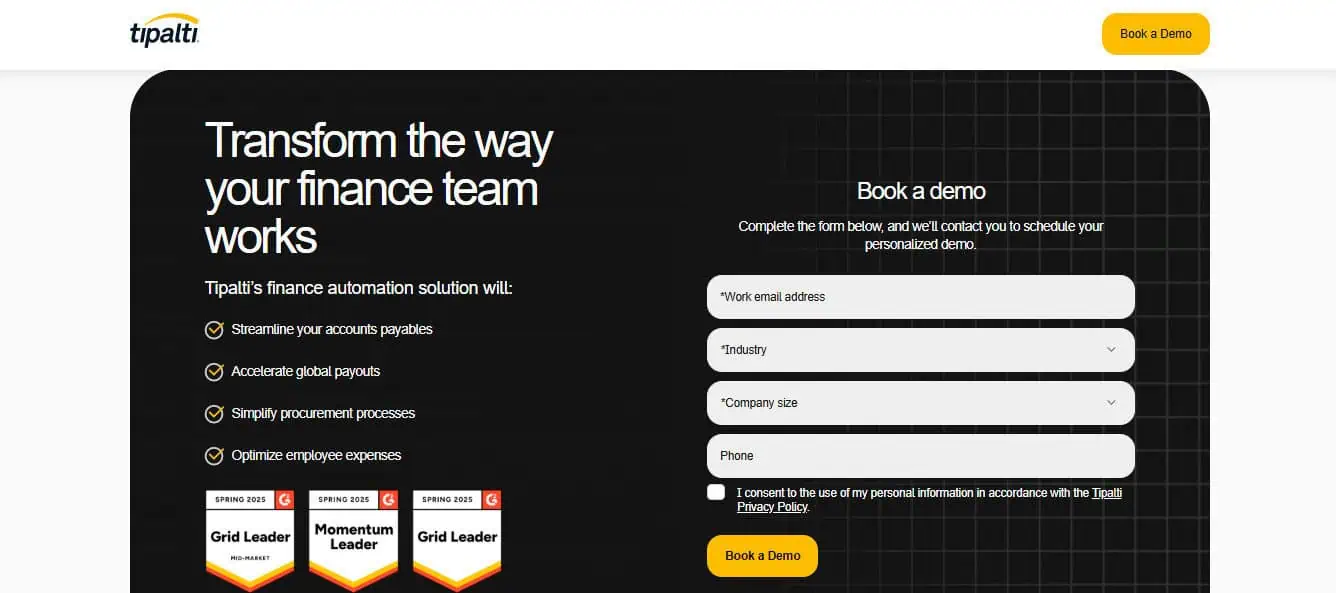
If your chief requirement is for a system that will make global payments easier, you should look for a platform that caters to this specifically. Tipalti is my recommendation here.
It specializes in automating global mass payments, making it ideal for businesses with international suppliers. It makes tax compliance and currency conversion much more straightforward, and it allows for the use of various payment methods across countries.
Unfortunately, it’s designed with bigger companies very much in mind; this is a missed opportunity, in my book, given the number of smaller outfits providing global services these days. If you’re a small company or solopreneur, you’ll likely find Tipalti’s implementation process too much to handle comfortably. You may also struggle to justify the spend based on your revenue.
5. SAP Concur – Enterprise-Level Expense Management
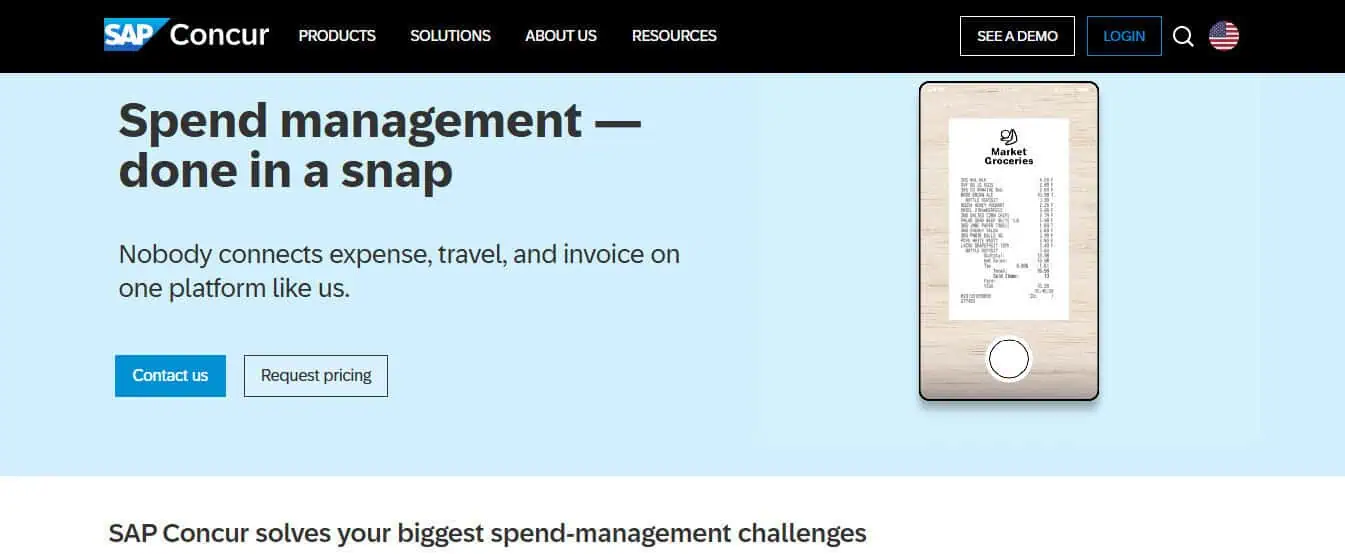
I’ve openly admitted my small-company bias here, but I did write this article for everyone to enjoy. If you’re reading this as a business leader at the enterprise level, this one is for you.
SAP Concur offers comprehensive travel and expense management solutions that work beautifully for larger organizations. It provides detailed reporting, policy compliance, and integration with various enterprise systems.
If you need really robust expense tracking capabilities and strong compliance features for a bigger organization, this is the service I’d look at first. This goes double if you’re already using other SAP products, as the integration is seamless.
The costs, as you might expect, are high. The setup process is also demanding. However, if you’re dealing with big numbers and you have the people in place to make sure things get done properly, neither of these should be a problem for you. SAP Concur is the road I’d personally go down for expense management if I were in charge of spend at a bigger company.
6. Brex – Best for Fast-Growing, Tech-Savvy Companies
Like Ramp, Brex offers a corporate card program as one of its chief selling points. It also does a great job of integrating this into its broader spend management and business account services; its platform is really easy to use as well. I’m also a big fan of its rewards program.
The big drawback here is that Brex works mainly with funded tech startups. If you’re an early-stage or bootstrapped organization, you might be out of luck here. Also, if you’re working with a bigger or more traditional company, you’ll probably find more suitable spend management software elsewhere.
Final Thoughts
Context is everything, friends. Each of the tools I’ve looked at here will thrive in some businesses and fall flat in others. If you judge a fish by its ability to climb a tree, and all that.
You need to consider your biggest pain points when it comes to expense management, and match those up with the tool that does the best job of solving them. This won’t necessarily be a quick job.
Ramp has emerged as a market leader in this space, but it’s not for everyone. Do your research, but start with the list above.

